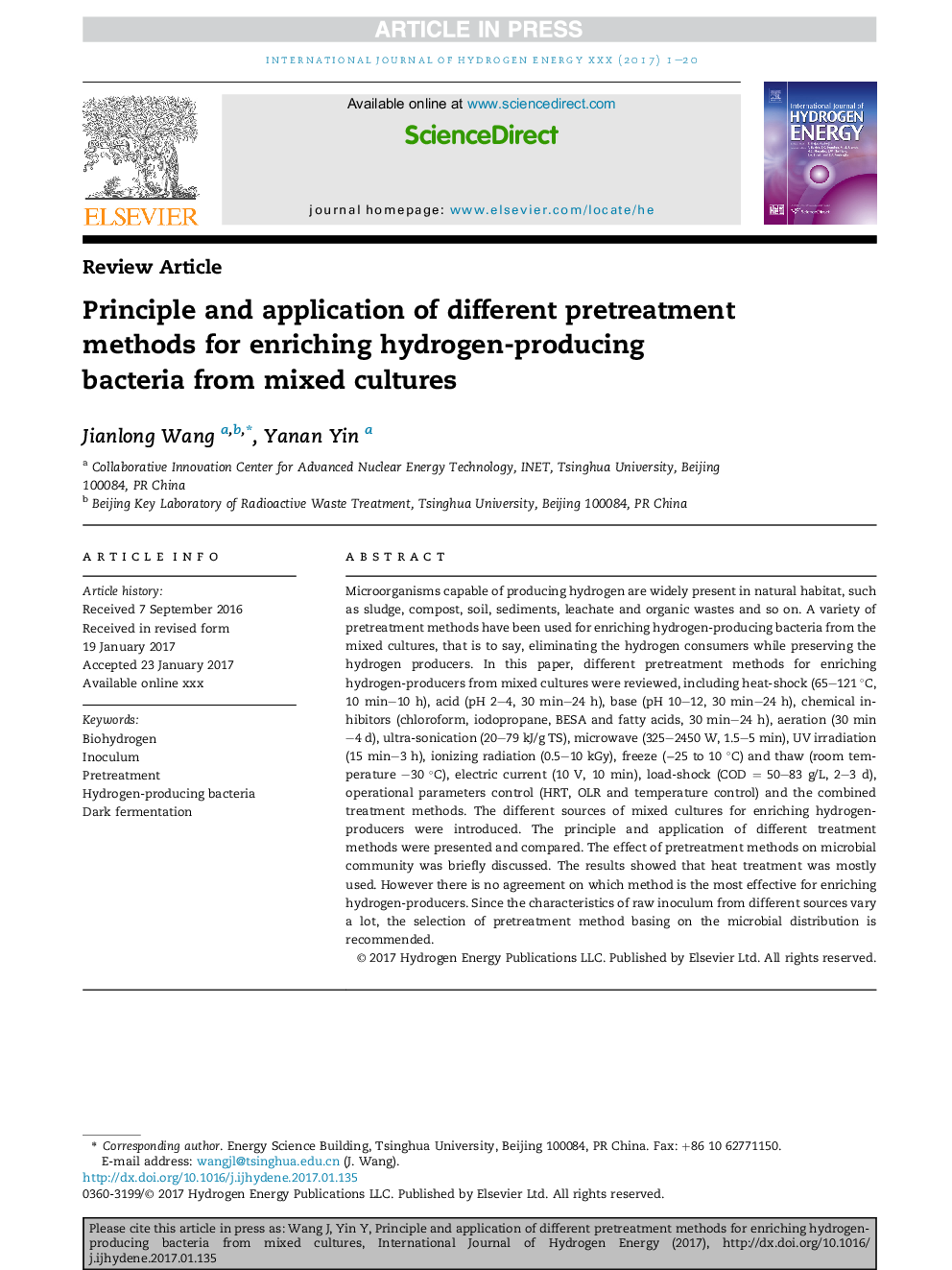| Article ID | Journal | Published Year | Pages | File Type |
|---|---|---|---|---|
| 5148356 | International Journal of Hydrogen Energy | 2017 | 20 Pages |
Abstract
Microorganisms capable of producing hydrogen are widely present in natural habitat, such as sludge, compost, soil, sediments, leachate and organic wastes and so on. A variety of pretreatment methods have been used for enriching hydrogen-producing bacteria from the mixed cultures, that is to say, eliminating the hydrogen consumers while preserving the hydrogen producers. In this paper, different pretreatment methods for enriching hydrogen-producers from mixed cultures were reviewed, including heat-shock (65-121 °C, 10 min-10 h), acid (pH 2-4, 30 min-24 h), base (pH 10-12, 30 min-24 h), chemical inhibitors (chloroform, iodopropane, BESA and fatty acids, 30 min-24 h), aeration (30 min-4 d), ultra-sonication (20-79 kJ/g TS), microwave (325-2450 W, 1.5-5 min), UV irradiation (15 min-3 h), ionizing radiation (0.5-10 kGy), freeze (â25 to 10 °C) and thaw (room temperature -30 °C), electric current (10 V, 10 min), load-shock (COD = 50-83 g/L, 2-3 d), operational parameters control (HRT, OLR and temperature control) and the combined treatment methods. The different sources of mixed cultures for enriching hydrogen-producers were introduced. The principle and application of different treatment methods were presented and compared. The effect of pretreatment methods on microbial community was briefly discussed. The results showed that heat treatment was mostly used. However there is no agreement on which method is the most effective for enriching hydrogen-producers. Since the characteristics of raw inoculum from different sources vary a lot, the selection of pretreatment method basing on the microbial distribution is recommended.
Related Topics
Physical Sciences and Engineering
Chemistry
Electrochemistry
Authors
Jianlong Wang, Yanan Yin,
